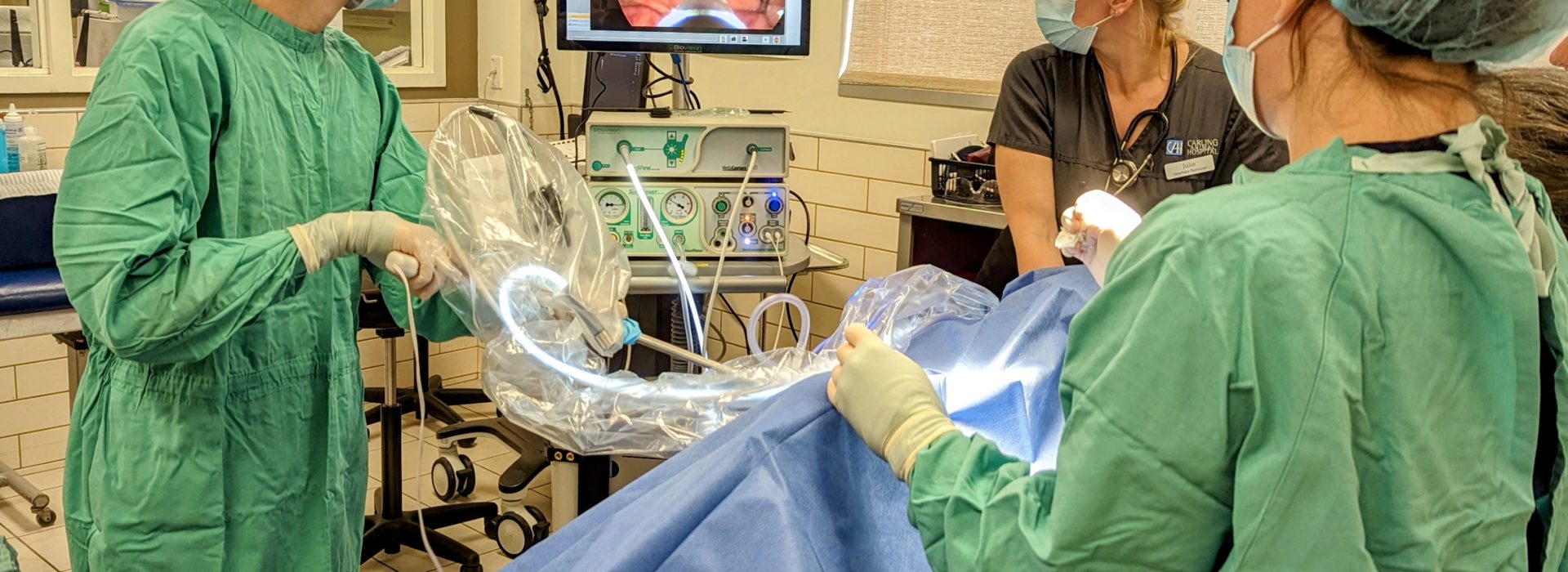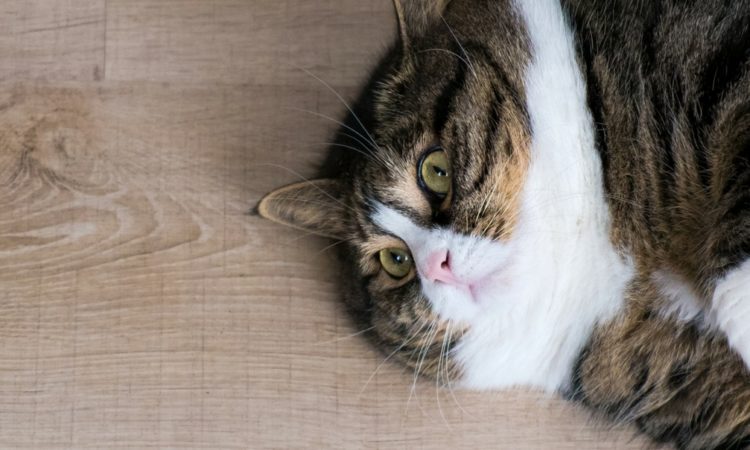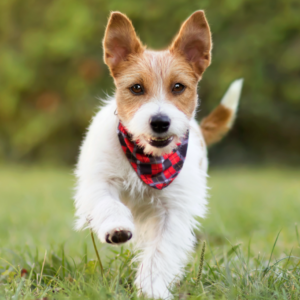How does a laparoscopic spay or cryptorchid neuter differ from traditional surgery?
In a laparoscopic procedure, a small incision is made to facilitate the passage of a camera and instruments into the abdomen. The camera transmits a digital image to a screen in the operating room, allowing a full view of the abdomen and organs.
In some laparoscopic spay procedures, an ovariectomy (removal of the ovaries) is performed – this has all of the same benefits as a traditional spay (ovariohysterectomy removal of the ovaries and uterus) in that it prevents any possibility of pregnancy or uterine infection (pyometra) and significantly reduces the risk of mammary cancer later in life. In other cases, when the uterus is small enough, a traditional ovariohysterectomy is performed laparoscopically. However, because of the ability with a laparoscope to visualize and use instruments deep in the abdomen, there is less traction placed on internal organs resulting in significantly less internal bruising, pain and inflammation.
Traditional cryptorchid neuters are challenging surgeries because an abdominal testicle can reside anywhere within the abdomen. This often necessitates a large incision, which is complicated in male dogs due to the anatomy of the prepuce/penis. In a laparoscopic abdominal cryptorchid neuter a small incision is possible. The laparoscope’s camera is used to locate the abdominal testicle without making a large incision. This results in a faster recovery and fewer complications with incision healing for the patient.
What are the benefits of laparoscopic surgery?
Research has shown that a laparoscopic spay patient experiences 65% less pain than a traditional spay. The surgery time is shorter, and there is less bleeding risk (if any). Recovery generally includes faster wound and skin healing and a quicker return to regular activity.
Will my pet have stitches?
Like most surgeries, laparoscopy procedures require stitches. In most cases, absorbable sutures are placed underneath the skin, which will dissolve independently and do not need to be removed.
Should my pet have a gastropexy?
Gastropexy is a prophylactic procedure that can be performed in patients who are of a breed at risk for a life-threatening condition called gastric dilation-volvulus (GDV). In a laparoscopic gastropexy, two small incisions are made (one to pass the laparoscopic camera and surgical tools and another to “tack the stomach” to the side of the abdomen). The breeds at highest risk for GDV include any deep-chested breed – the highest-risk breeds are Great Danes, Irish Setters, Weimaraners, Standard Poodles and Rottweilers. This procedure is uncomplicated to add on to other laparoscopic abdominal procedures or can be performed as an independent laparoscopic surgery. Please discuss with your veterinarian whether your pet could benefit from a prophylactic gastropexy.








